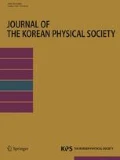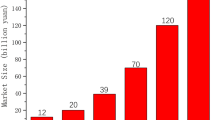Abstract
In Korea, the pressurized water reactor (PWR) is the most common nuclear power plant. Twenty-four PWRs are operating commercially or are under construction. According to the public requirements of the reactor pressure vessel (RPV) surveillance program, all PWR plants have surveillance capsules. One type of PWR, the OPR1000 nuclear power plant has a design life of 40 years. Before the plant began operation, six surveillance capsules were installed at the OPR1000 RPV inner wall in the downcomer region to obtain more accelerated embrittlement characteristics of the RPV material. However, the lead factor defined as the ratio of the fast (E > 1.0 MeV) neutron flux at the surveillance capsule to the fast neutron flux at the RPV peak fluence location had been estimated at about 1.3 for OPR1000 plants. Therefore, obtaining high-dose irradiation embrittlement data for life extension is difficult. Supplemental surveillance capsules were fabricated and installed at the Westinghouse plant, which has a relatively high lead factor to overcome the small lead factors of the OPR1000. This paper discusses the fabrication and installation of supplemental surveillance capsules and the expected withdrawal schedule based on neutron transport calculations and dosimetry evaluations. As a result, 60 years of RPV embrittlement data for OPR1000 are expected to be obtained if the supplemental capsule is irradiated at the Westinghouse capsule holder for 7 years approximately.






Similar content being viewed by others
References
U.S. Nuclear Regulatory Commission (2017) Reactor vessel material surveillance program requirements, 10CFR Part50, Appendix H, U.S. NRC, Rockville, MD
ASTM E185-82 (1982) Standard practice for design of surveillance programs for light-water moderated nuclear power reactor vessels, ASTM International, West Conshohocken, PA, www.astm.org
Nuclear Safety and Security Commission (2014 ) Surveillance Test Standard of Reactor Pressure Vessel,” Notification No. 2014-14, Nuclear Safety and Security Commission, Seoul, Korea
ASTM E23-07a (2007) Standard test methods for notched bar impact testing of metallic materials, ASTM International, West Conshohocken, PA, www.astm.org
ASTM E8-11 (2011) Standard test methods for tension testing of metallic materials, ASTM International, West Conshohocken, PA, www.astm.org
ASTM E1820-13 (2013) Standard test method for measurement of fracture toughness, ASTM International, West Conshohocken, PA, www.astm.org
ASTM A370-09a (2009) Standard test methods and definitions for mechanical testing of steel products, ASTM International, West Conshohocken, PA, www.astm.org
ASTM E21-09 (2009) Standard test methods for elevated temperature tension tests of metallic materials, ASTM International, West Conshohocken, PA, www.astm.org
ASTM E399-12 (2012) standard test method for linear-elastic plane-strain fracture toughness kic of metallic materials, ASTM International, West Conshohocken, PA, www.astm.org
ASTM E1820-17 (2017) Standard test method for measurement of fracture toughness, ASTM International, West Conshohocken, PA, www.astm.org
U. S. Nuclear Regulatory Commission, Regulatory Guide 1.190, Calculational and Dosimetry Methods for Determining Pressure Vessel Neutron Fluence (U. S. NRC, Rockville, MD, 2001)
RSIC Computer Code Collection CCC-650, DOORS 3.1, One-Two and Three Dimensional Discrete Ordinates Neutron/Photon Transport Code System (Radiation Safety Information Computational Center, Oak Ridge National Laboratory, Oak Ridge, TN, 1996)
RSIC Data Library Collection DLC-185, BUGLE-96 Coupled 47 Neutron, 20 Gamma-Ray Group Cross-Section Library Derived from ENDF/B-VI for LWR Shielding and Pressure Vessel Dosimetry Applications (Radiation Safety Information Computational Center, Oak Ridge National Laboratory, Oak Ridge, TN, 1996)
RSIC Data Library Collection DLC-178, SNLRML Recommended Dosimetry Cross-Section Compendium (Radiation Safety Information Computational Center, Oak Ridge National Laboratory, Oak Ridge, TN, 1994)
Author information
Authors and Affiliations
Corresponding author
Additional information
Publisher's Note
Springer Nature remains neutral with regard to jurisdictional claims in published maps and institutional affiliations.
Rights and permissions
About this article
Cite this article
Maeng, Y., Kim, C. Supplemental surveillance capsule application for the optimized power reactor, OPR1000, in Korea. J. Korean Phys. Soc. 80, 102–109 (2022). https://doi.org/10.1007/s40042-021-00323-8
Received:
Revised:
Accepted:
Published:
Issue Date:
DOI: https://doi.org/10.1007/s40042-021-00323-8




